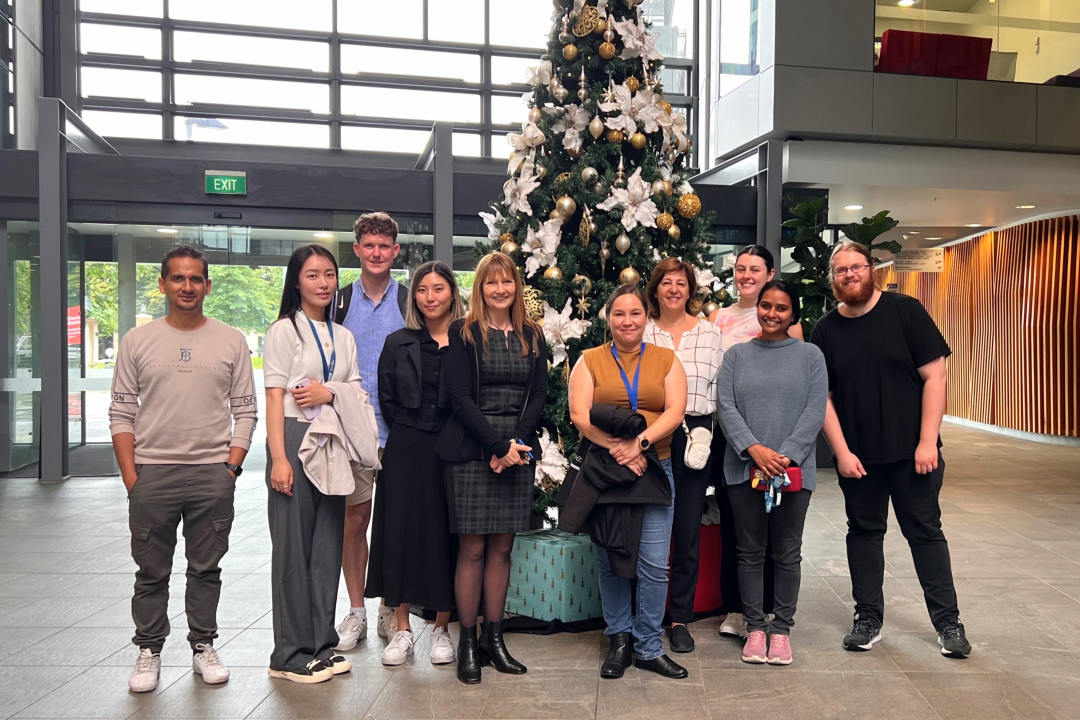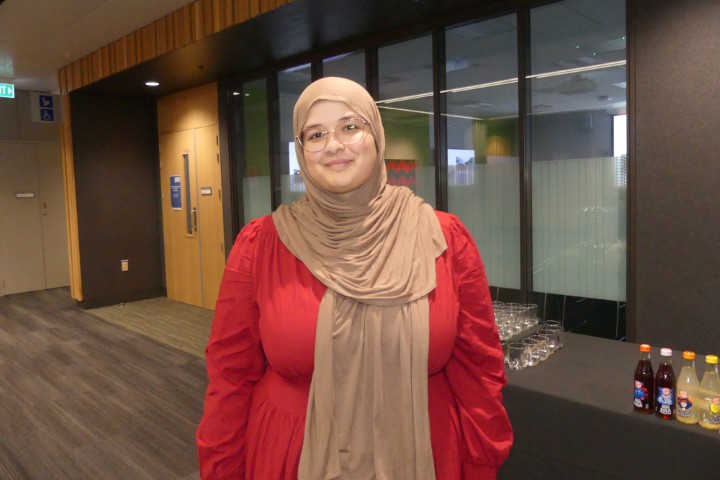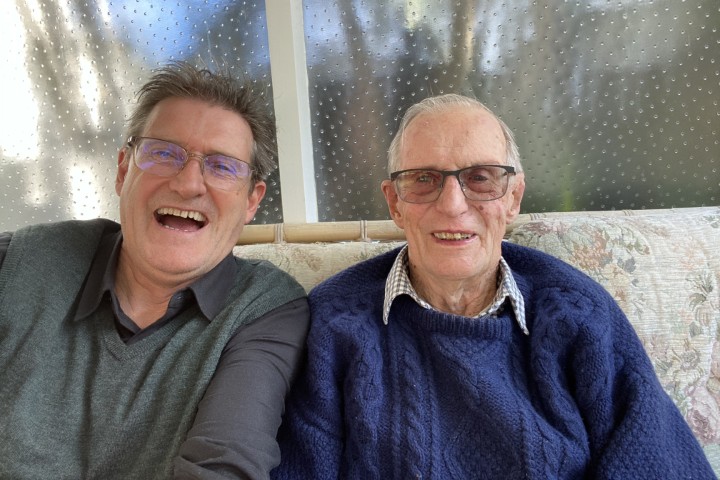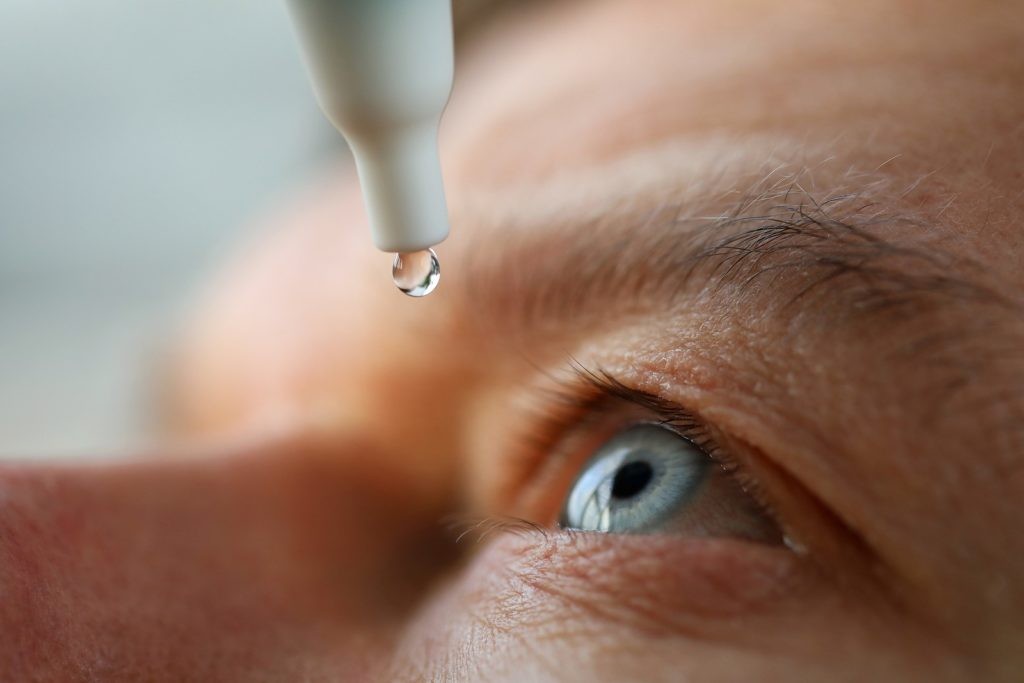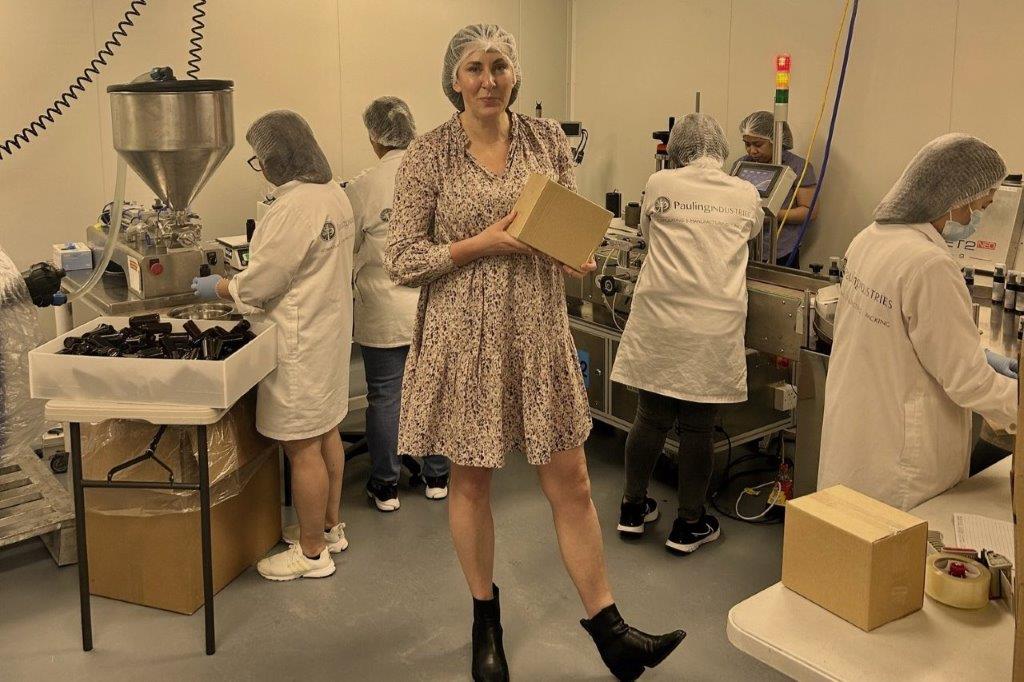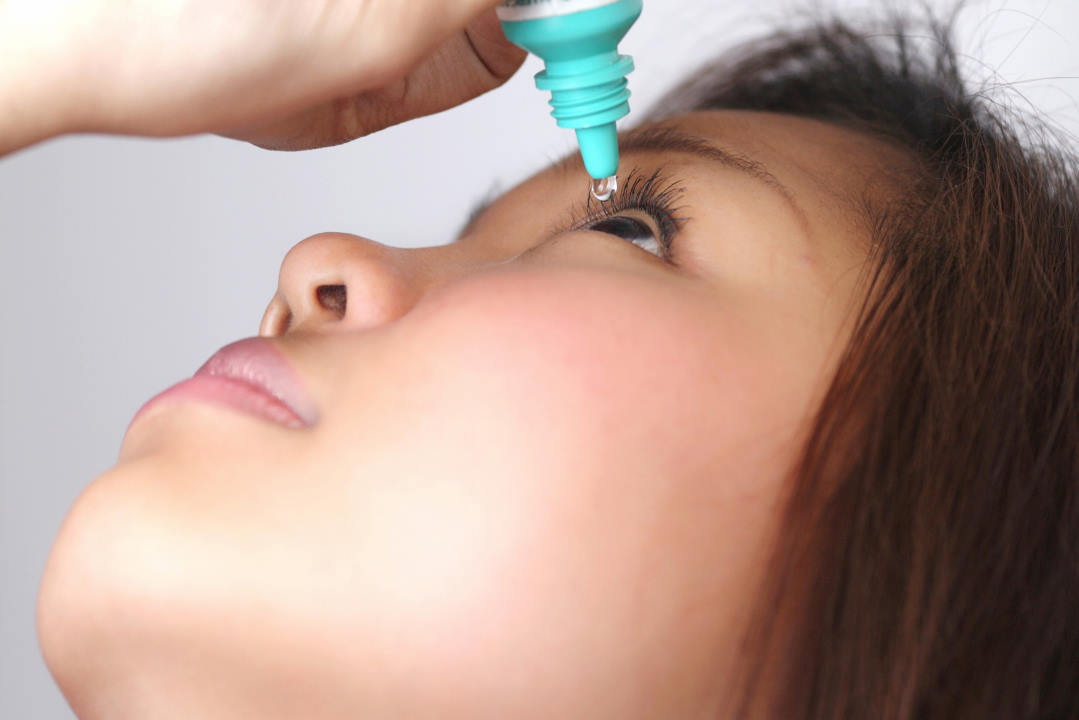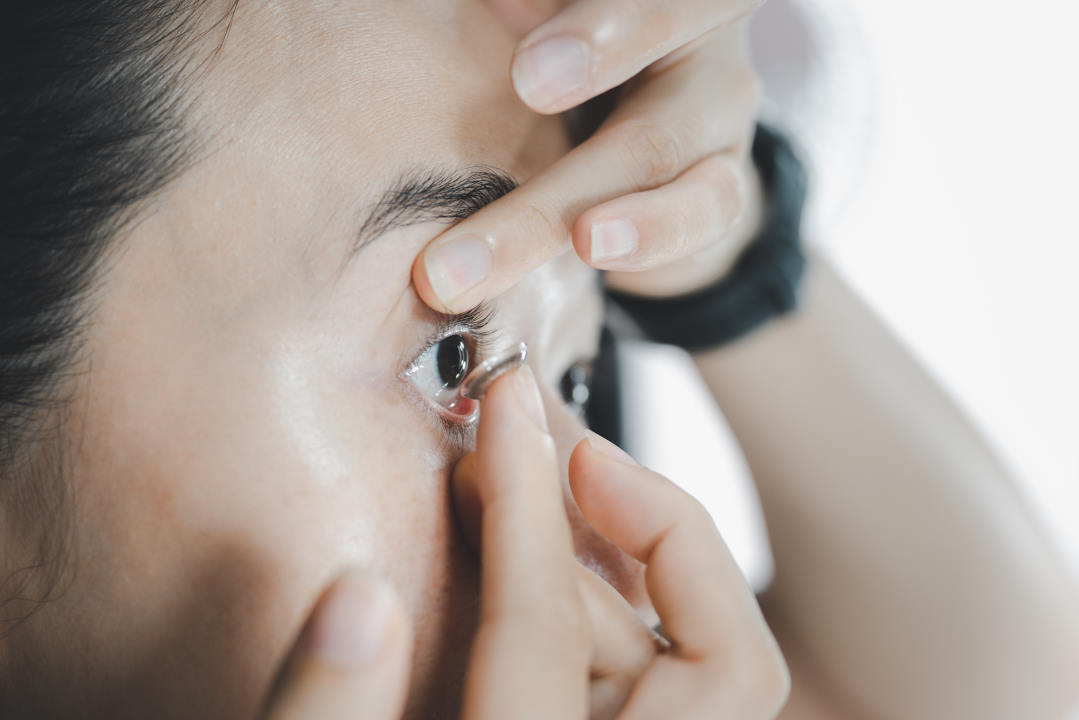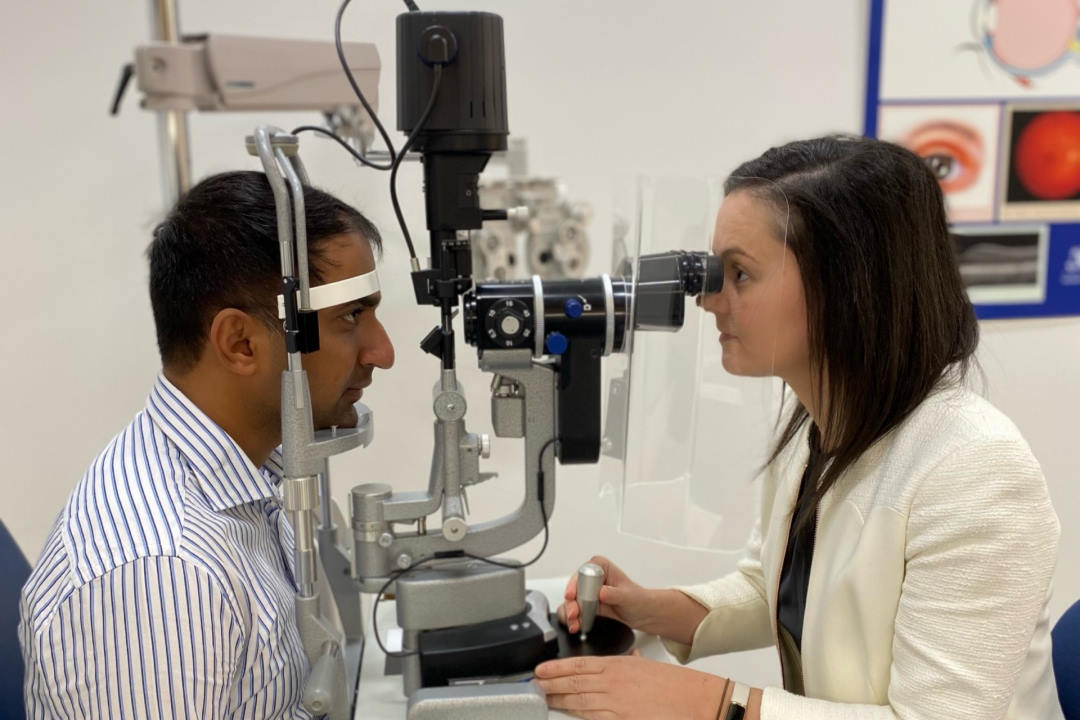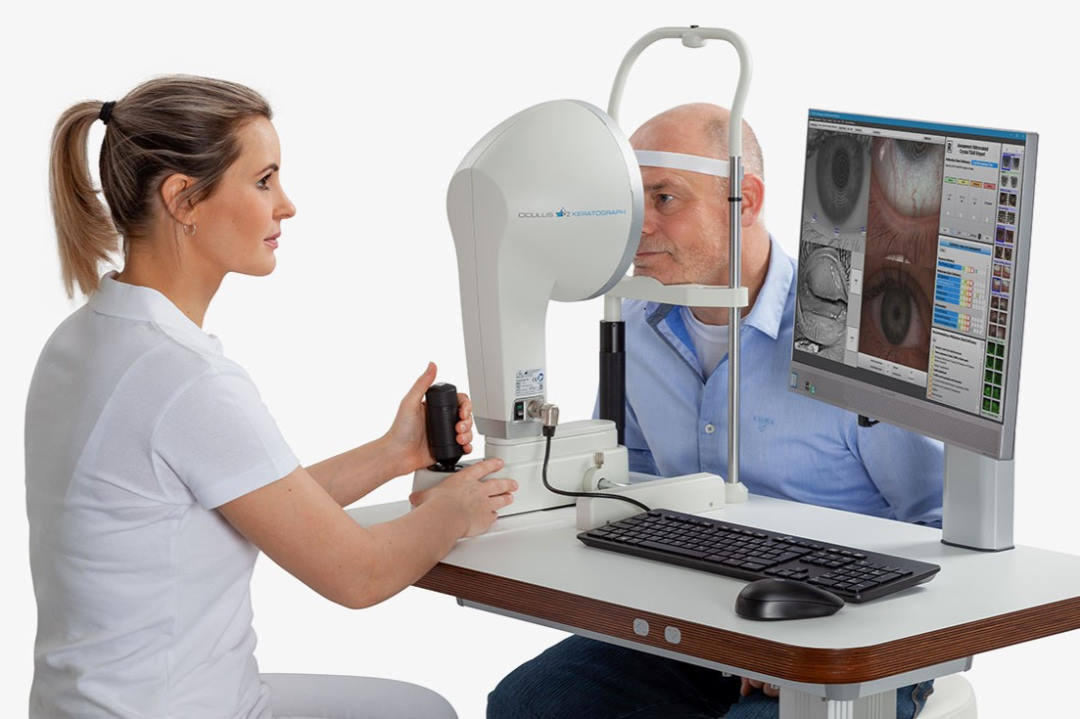DRY EYE 2024: Taking dry eye research to new heights
When it comes to researching in dry eye, everyone knows I’m the first to tell prospective researchers that ‘the sky’s the limit’. Well, it turns out this might be somewhat of an underestimation! Thanks to a new collaboration to help understand why astronauts experience dry eye, and what might be done to assist those affected, the Ocular Surface Laboratory (OSL) was given an opportunity to take dry eye research to the next level - into space, to be precise! In June this year, together with Dunedin ophthalmologist Dr Francesc March de Ribot, I was lucky enough to be involved in a research project exploring the impact of weightlessness on tear dynamics. Led by Dr Timon Ax, this research uses the microgravitational environment induced during parabolic flight to serve as a proxy for conditions in space. It was one of the most unique experiences of my life.

Prof Jennifer Craig and Dr Timon Ax preparing to board their ‘space’ flight
Back on the ground – and, thankfully, without the need for an intramuscular anti-emetic - the OSL research team has been extremely busy completing projects and undertaking a range of new studies to better understand all there is to know about dry eye disease (DED). We’ve also been celebrating successes, including past OSL team member, Dr Isaac Samuel (whose BMedSci Hons research resulted in the development of a Kaupapa Māori framework for ocular health) who has now graduated and is a house officer at Middlemore Hospital in Auckland.
DED risks, pathophysiology, MGD and more
Exploring DED risk factors and the relevance of blinking in the development of meibomian gland dysfunction (MGD) continues to be a key interest and we’re fortunate to have fourth-year BOptom students, Quennie Chen, Jimin Choi, Bethany Torr and Sarah Yang, working with us, contributing to an ongoing longitudinal study into the tear film and ocular surface. Paediatric physiotherapist Julie Cullen also joined the team to explore digital screens as an increasingly concerning risk factor for dry eye development in children. As part of her masters, she’s running a survey to find out more about screen use in 12-18-year-olds and perceptions surrounding such screen use for parents and their children. Please pass on this link - https://redcap.auckland.ac.nz/surveys/?s=ETD9HRD3DYJCRDL3 - to anyone who might be interested in participating.
To better understand the pathophysiology of ocular surface changes associated with contact lens wear, current OSL research fellow Dr Kalika Bandamwar in collaboration with previous OSL research fellow Professor Alex Müntz, head of the Institute of Optometry at the University of Applied Sciences and Arts Northwestern Switzerland, has been studying cellular stress at the lid margin at a molecular level, courtesy of funding from the prestigious International Society for Contact Lens Research. The research aims to identify biomarkers that might be associated with contact lens discomfort symptoms which remain one of the most common reasons for patients ceasing to wear lenses. Kalika will shortly present her findings at the biennial ISCLR conference in Halifax, Canada, along with OSL PhD student Catherine Jennings, who will be sharing the latest outcomes from her ocular surface inflammation research, after both were awarded grants to attend the conference as student members.
From diagnosis to management
We know how important it is to adopt evidence-based consensus diagnostic criteria when making a dry eye diagnosis to provide all patients with consistent information about their disease state. Subclassification is a very important step that’s used to inform treatment choices and the OSL team, with the expert guidance of long-term collaborator Dr Michael Wang, has been evaluating the diagnostic accuracy of a range of clinical markers that can be used in assessing and subtyping DED. Areas of exploration include ocular surface staining - not just of the cornea and the conjunctiva, but also lid-wiper epitheliopathy. Corneal sensitivity as a marker for dry disease has also been under scrutiny as we recognise this as a growing topic of interest around the world. Most recently, we’ve been taking a closer look at the importance of blink completeness as well as qualitative and quantitative lipid layer evaluation. We look forward to sharing those outcomes in due course. Attempting to address the impacts of suboptimal blinking, Kalika and Jordan Cooper have completed a study using a bespoke blinking-exercise smartphone app developed by previous summer student, Cameron Dean. We were also fortunate to have Māori summer student Mystie Jacobsen join us over summer to explore dry eye prevalence and risk factors in Māori, making a valuable contribution to our research knowledge. As part of our contact lens-related research, Kalika has also been working with BOptom honours students Eujin Kang and Fiona Li to explore the impacts of lens wear on the lipid layer and the prophylactic potential of different types of artificial tears, which hopefully we will also report on soon.
Management of dry eye remains an industry focus, with a fairly regular release of new devices and technologies. Our team continues to research a number of these, hoping to elicit mechanisms of action and confirm potential benefits through sound study design. Recently we’ve focused on evaluating treatments from the latest generation of tear supplements to some of the latest technologies, including thermal pulsation and quantum molecular resonance, and are excited to be planning some novel research on low-level light therapy.
OSL honours-project student Bethany Torr completed a summer studentship with OSL focusing on light-based antimicrobial research, with post-doc Dr Sanjay Marasini’s team, and dabbled in some dry eye research discovering that Demodex do not appear to be susceptible to UVC light exposure. This contrasted with the findings of fellow summer student Jordan Cooper who worked with Catherine Jennings and visiting researcher Professor Etty Bitton from the University of Montreal, Canada, on the impact of castor oil on Demodex.
Collaborating to improve DED research
We’ve been extremely lucky with international collaborator visits to the OSL over the past year. These included Etty’s visit at the end of 2023 and an extended visit from Professor James Wolffsohn from Aston University, UK, this year. Thanks to the successful award of a University of Auckland Hood Fellowship we were able to host James for four months, providing an invaluable opportunity to progress our collaborative projects and plan our next academic ventures. We’re thrilled that James has also been awarded honorary professor status at the University of Auckland, facilitating ongoing collaboration. During his visit this year, we completed research manuscripts, progressed work on TFOS DEWS III, which is now up and running, worked on a special journal issue, established some new projects and planned a new book, with Professor Lyndon Jones from the University of Waterloo, Canada. We also set up and launched a Dry Eye Association in New Zealand, based on the parent organisation launched in the UK in November 2023, to support those affected by dry eye disease through education and increased awareness. The website offers evidence-based patient resources, including access to the free myDryEye app, as well as a directory of local dry eye practices and research opportunities. Following April’s launch, we have created a small steering group of passionate patient members, chaired by University of Auckland student Bas Crutzen, supported by optometrist and ophthalmologist clinical advisors, so watch this space for Dry Eye Association updates, developments and future events.
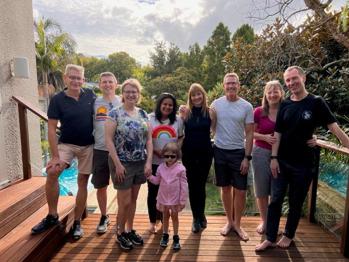
Relaxing with former team members and current collaborators (L-R) Dr Russell Walmsley, former PhD students Gerry Cairns, visiting from the US with wife Carrie and daughter Isla, and Sydney-based ophthalmologist Dr Nisha Sachdev, Prof Jennifer Craig and Dr Simon Dean and Rachel and Prof James Wolffsohn
In the meantime, it’s all hands to the deck as we prepare for the upcoming conference season. As well as ISCLR in August, we are excited that New Zealand will be well represented at the 10th International TFOS Conference, Basic Science and Clinical Relevance, in Venice at the end of October – the first TFOS conference for eight years! It will include an update on TFOS DEWS III as well as oral and poster presentations on the latest research in the field. Invited speakers include our own Dr Michael Wang and we have several posters accepted from other team members. Personally, I’m looking forward to describing the launch of a Dry Eye Management Delphi Panel, which will follow on from TFOS DEWS III to help bridge the gap between current scientific evidence and clinical practice, as well as the valuable opportunity to meet with other researchers and clinician scientists from around the world to expand our horizons, so we can best support our dry eye and ocular disease patients.
Thus, I’m delighted to introduce our 2024 Dry Eye special feature which provides a snapshot of some of the latest thinking and research in DED today, and demonstrating that perhaps dry eye research is rocket science after all!

Professor Jennifer Craig heads up the Ocular Surface Laboratory in the University of Auckland’s Department of Ophthalmology. She was chair of the TFOS Lifestyle Workshop and vice-chair of TFOS DEWS II and is clinical editor of NZ Optics’ annual Dry Eye special feature.









